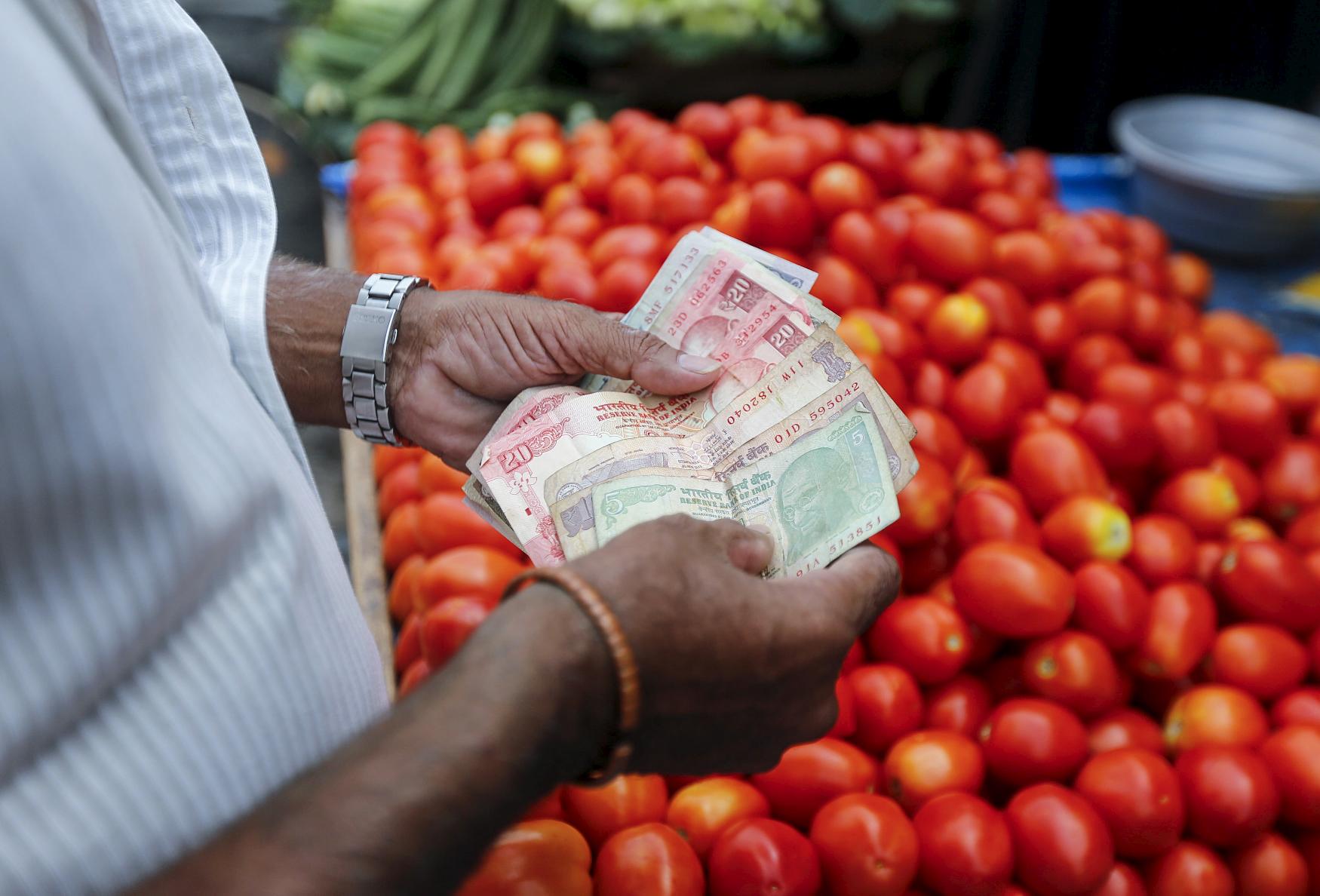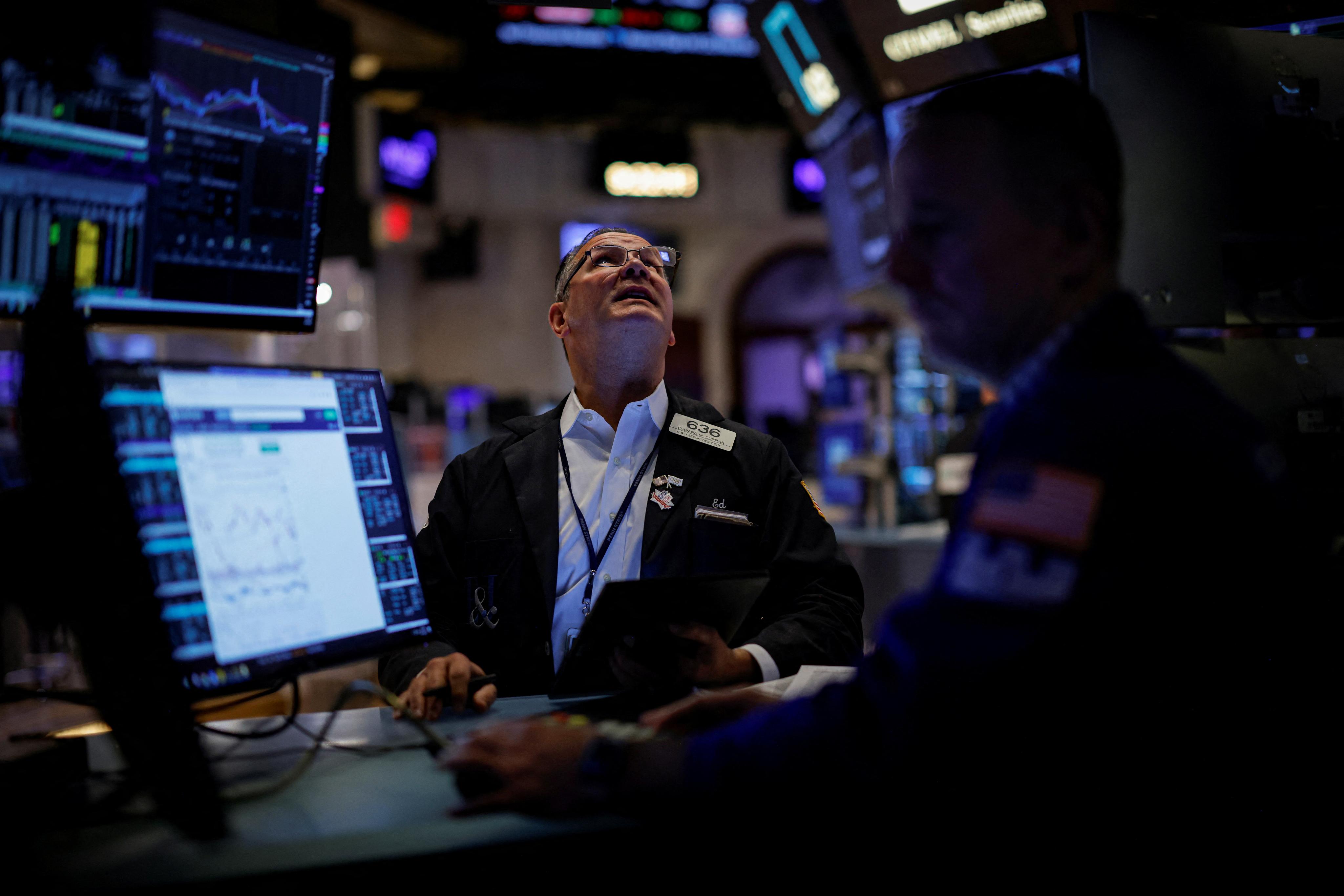
2024-09-27 10:59
KAMPALA, Sept 27 (Reuters) - Uganda's government plans to cut spending by just over a fifth and domestic borrowing by just over a half in the 2025/26 (July-June) fiscal year, the finance ministry said on Friday. Uganda's rising public debt load has been fuelling concerns among oppositions politicians and also triggered ratings agencies Fitch and Moody's to cut the country's credit rating. The government says borrowing has been used to drive economic growth, which has been faster than many of its African peers since the COVID-19 pandemic. Overall government spending for 2025/26 is projected at 57.4 trillion Ugandan shillings ($15.56 billion), compared with 72.1 trillion shillings planned for the present financial year, a draft budget paper from the ministry showed. The government plans to borrow about 4.01 trillion shillings ($1.09 billion) from the domestic market via Treasury bonds in the same period, 53.9% lower than in 2024/25, it said. The ministry gave no reason for the drop in spending or borrowing figures. Ramathan Ggoobi, the Finance Ministry's permanent secretary, said the government's funding priorities would be in agro-industrialisation, tourism, and minerals including petroleum. Ggoobi said external debt repayments are expected to rise to 4.03 trillion shillings in 2025/26 from 3.1 trillion shillings in the present fiscal year, adding to the squeeze in domestic spending. ($1 = 3,689.0000 Ugandan shillings) Sign up here. https://www.reuters.com/world/africa/uganda-cut-spending-domestic-borrowing-202526-finance-ministry-says-2024-09-27/

2024-09-27 10:29
Sept 27 (Reuters) - Sterling edged lower on Friday, but still hovered close to a two-and-a-half-year peak against the dollar, as increasing risk appetite following China's stimulus plan and monetary policy divergence between the Bank of England and other major central banks provided some support. Sterling was 0.25% lower at $1.33815 but remained close to this week's $1.3434, its highest level since February 2022. The pound usually appreciates when investors go for riskier assets such as equities, which jumped on Thursday. It was set for its second consecutive week of gains against the dollar. In the pair, the fresh highs are in part justified by the policy rate differential between Britain and the U.S., ING analyst Francesco Pesole said in a note. He flagged, however, that sterling/dollar may start to look expensive soon as expectations for a 50bp Fed cut may be misplaced. Against the euro, the pound held steady at 0.83385, set for its third consecutive week of gains. Finance minister Rachel Reeves is setting out her first budget on Oct. 30. "I do think that we could be faced with a little bit of a rocky road as we approach the budget in the UK," Jane Foley, senior forex strategist at Rabobank, said, due to speculation that it could bring an increase in capital gains tax and maybe in employers' contributions for national insurance, both of which "won't be very friendly to investors or entrepreneurs". British Prime Minister Keir Starmer said on Tuesday the cost of fixing shortfalls in the public finances would be shared fairly and that all his government's policies would still be properly funded. However, the market is "fairly relaxed" with the idea that the BoE is only likely to cut interest rates on a quarterly basis, Foley said, providing some support to sterling and allowing it to possibly continue to outperform the euro. Stickier-than-expected British inflation has fed expectations for a more gradual BoE easing cycle. The euro has lost about 3.8% against the pound so far this year, with the pair dropping below the 0.8320 level earlier this week. "We probably need some inflation surprise in the eurozone to prevent 0.8300 to be tested soon," Pesole said. Sign up here. https://www.reuters.com/markets/currencies/sterling-slides-versus-dollar-steady-against-euro-2024-09-27/

2024-09-27 10:11
MUMBAI, Sept 27 (Reuters) - The Indian rupee ended lower on Friday pressured by month-end dollar demand from importers, with traders expecting the future path of U.S. monetary policy and the Chinese yuan to be key drivers of the currency's trajectory. The rupee closed at 83.70 against the U.S. dollar, compared to its previous close of 83.6425. The currency slipped 0.1% for the week. The dollar index was down slightly at 100.5 while broader Asian currencies were mixed, with the Chinese yuan retreating from a 16-month high and the Malaysian ringgit rising 0.4%. The rupee declined this week after failing to hold above its key resistance level of 83.50. Traders pointed to strong dollar demand from local importers, paring of speculative longs, and likely absorption of dollar inflows by the Reserve Bank of India as factors that have kept a lid on the currency's gains. The rupee was has been unable to benefit much from a strong pickup in inflows, lower crude oil prices and a rally in most of its regional peers this month. Meanwhile, dollar-rupee forward premiums slipped after strong U.S. economic data blunted hopes of another 50 basis points rate cut by the Fed in November and lifted U.S. Treasury yields. The 1-year implied yield was down 2 bps at 2.38% after touching a 16-month peak in the previous session. U.S. personal consumption expenditures (PCE) data is due later on Friday, and is expected to show that August core PCE inflation was unchanged at 0.2% month-on-month, according to a Reuters poll. "Even in the case of a small deviation from consensus, the recent shift in the Fed's focus to the employment side of its mandate means markets are less sensitive to inflation news," ING Bank said in a note. Sign up here. https://www.reuters.com/markets/currencies/rupee-ends-weaker-fed-policy-path-yuan-price-action-focus-2024-09-27/

2024-09-27 10:07
Significance of Cushing waning as output heads to Gulf Coast Record trading volumes on Houston contracts Liquidity along Gulf Coast to boost hedging, arbitrage opportunity Cushing stocks near operational low HOUSTON, Sept 27 (Reuters) - Rising U.S. crude oil exports are boosting the prominence of Gulf Coast price benchmarks and buoying trading volumes on Houston contracts, eroding the significance of the Cushing, Oklahoma, storage hub. Since U.S. WTI Midland crude oil transactions joined the dated Brent price assessment a year ago, U.S. oil exports have overshadowed the role of Cushing as a storage and pricing hub, traders and analysts said. Cushing has been the delivery and pricing point for West Texas Intermediate crude futures (WTI) on the New York Mercantile Exchange (NYMEX) since 1983. The benchmark is currently used to price major U.S. crude grades for physical delivery, trading at a differential to WTI. However, not long after the U.S. lifted its ban on crude exports in 2015 amid a shale boom that turned the country into the world's top producer, both the Intercontinental Exchange (ICE.N) , opens new tab and CME Group (CME.O) , opens new tab, which owns NYMEX, launched contracts to trade and deliver crude from Midland, Texas, to terminals around Houston. Average daily volumes on CME's WTI Houston contract more than doubled so far in September to a record high year on year, the exchange said. An all-time high of over 18 million barrels were delivered against ICE's competing HOU contract, compared with less than 10 million barrels in August last year, ICE said. Increasing liquidity in these contracts will create opportunities for hedging and arbitrage trades, leading to more deliveries in storage terminals in the region, and fewer into Cushing, oil market experts said. "The physical market for U.S. production has already moved to the U.S. Gulf Coast, and now the futures market is following suit," said Jeff Barbuto, global head of oil markets at the Intercontinental Exchange (ICE) (ICE.N) , opens new tab. While shale oil output from the Permian basin in Texas and New Mexico, the largest U.S. oilfield, has surged 3.6% to average 6.1 million barrels per day (bpd) so far this year, much of that oil is heading to storage closer to Gulf Coast export ports, or to refiners in the region. "Where the big trade flow of crude oil is from the Permian and comes across to Houston, it kind of bypasses Cushing," said Colin Parfitt, a vice president at Chevron (CVX.N) , opens new tab. CME said that WTI continues to be the most liquid and significant benchmark and that Gulf Coast is an important and growing market. Inventories at the Gulf Coast stood at about 235 million barrels last week, about 7% higher than levels at the start of 2016 after the export ban was lifted. Cushing storage bounced off 11 month lows to 22.8 million barrels last week, near operational minimums, and was about 64% lower than the levels at the start of 2016. "If someone were to say a year ago, that Cushing (stocks) would be at rock bottom, you would think oil would be at $100," said James Cordier, founder of think tank Cordier Commodity Report. The U.S. benchmark was trading below $70 a barrel on Thursday. COASTAL PRICES DOMINATE The flagship price benchmark along the Gulf Coast, particularly for exports, is WTI at East Houston , also known as MEH as it represents WTI arriving by pipeline and traded at the Magellan's East Houston (MEH) terminal. "U.S. exports are around 4 million (barrels) a day and Midland priced at East Houston is really the barometer on how to price U.S. exports," said Jeremy Irwin, senior oil markets analyst at researcher Energy Aspects. "I don't see any incentive to why you would want to necessarily store barrels at Cushing," said Irwin. "What Cushing becomes is more of a flow-through hub, rather than a storage pricing hub." Oil basins feeding Cushing have also lost some of their sparkle. U.S. crude output growth from secondary shale oil basins in North Dakota, Pennsylvania, Ohio and West Virginia have slowed. They historically helped fill Cushing's hundreds of storage tanks. Canada's Trans Mountain pipeline expansion also has siphoned some of the crude oil that would have flowed to Cushing. Sign up here. https://www.reuters.com/markets/commodities/us-gulf-coast-oil-prices-take-center-stage-exports-dominate-2024-09-27/

2024-09-27 10:03
A look at the day ahead in U.S. and global markets from Mike Dolan U.S. stocks surf new records as the last full week of the quarter comes to a close, with China's furious monetary easing accelerating the rebound there and Wall Street eyeing the release of the Fed's favored inflation gauge. After a barrage of interest rate cuts, real estate props and stock market supports this week, China's central bank cut its one-week reverse repo rate by another 20 basis points on Friday - trying to get across what it likely sees as an alarming economic slowdown that may see it miss 2024 targets. Reuters reported Chinese cities Shanghai and Shenzhen are planning to lift remaining restrictions on home purchases to attract potential buyers and shore up flagging real estate markets. Whether the widening stimulus proves effective or not, the forcefulness and intent is becoming clear. As is the backdrop. China's industrial profits swung back to a sharp contraction in August, plunging almost 18% from a year earlier, according to new data. But heading into a series of holidays next week, China's mainland stocks indexes <.CSI300 surged anew - adding another 4.5% again on Friday to notch their best week since 2008. With new public borrowing central to the plan and hopes of some recovery afoot, 10-year Chinese government bond yields pushed higher. But the offshore yuan backed off 16-month highs amid reported selling by state banks. Back on Wall Street, the persistent strength of the U.S. economy was underlined on Thursday by another surprising drop in weekly jobless claims, robust durable goods orders last month and second-quarter post-tax corporate profit growth that was revised higher to 3.5%. Attention now turns back to inflation to see if the Federal Reserve's projected easing path is warranted in that light, and August PCE gauge is released later on Friday. While consensus forecasts are for a 0.2% rise in 'core' PCE last month that would see the annual rate tick up to 2.7% from 2.6%, Fed governor Christopher Waller suggested last week softening components in that report were a key reason for the Fed's outsize 50-bp rate cut. Federal Reserve Governor Lisa Cook on Thursday endorsed the size of that cut as a way to address increased "downside risks" to employment. "I whole heartedly supported the decision." Treasury Secretary Janet Yellen said the economy was on course for a 'soft landing' and that would allow Fed rates to come down to 'neutral' levels - seen by Fed officials and financial markets as around 3% compared to the current 4.75-5.0% range. Given the strength of the latest numbers however, futures now see only a 50% chance of another 50-bp cut at the Fed's next meeting in November. Another 25-bp move is baked in and some 75 bps by year end. Ten-year Treasury yields steadied on Friday after creeping higher over the past week, with the 2-10-year yield curve gap slipping back to a positive 15 bps. U.S. 30-year fixed mortgage rates edged down to a two-year low of 6.08% this week. The dollar index (.DXY) , opens new tab was firmer, with the euro retreating as euro zone inflation numbers heaped pressure on the European Central Bank to keep cutting its interest rates next month and money markets there now fully price another 50 bps off ECB rates by yearend. France's headline inflation rate plunged by more than expected to just 1.5% in September, well below the ECB's 2% target and weighed down by sharp declines in energy prices. With annual crude price declines running at almost 30% after a fresh plunge this week, the disinflation pulse will be building everywhere. ECB sources say dovish members of the council are pushing hard for a third rate cut of the year at October's policy meeting, according to a Reuters report on Thursday. The number of people out of work in Germany rose more than expected in September in the latest sign of the challenges facing Europe's largest economy. Elsewhere, the Bank of Mexico lowered its benchmark interest rate by 25 bps to 10.50% on Thursday, the second straight cut as price pressures have eased in Latin America's No. 2 economy. And Japan's yen jumped on Friday, recovering earlier losses, after Japan's former defense minister Shigeru Ishiba won the leadership contest of the country's ruling Liberal Democratic Party and was set to become its next prime minister. Ishiba is a critic of past monetary stimulus and told Reuters the central bank was "on the right policy track" with rate hikes thus far. Key developments that should provide more direction to U.S. markets later on Friday: * U.S. August PCE inflation gauge, personal income and consumption, August trade balance, August retail and wholesale inventories, final September sentiment survey from University of Michigan * Federal Reserve Board Governor Michelle Bowman speaks Sign up here. https://www.reuters.com/markets/us/global-markets-view-usa-2024-09-27/

2024-09-27 07:44
MADRID, Sept 27 (Reuters) - United Arab Emirates' renewable energy company Masdar will seek to further grow its presence in the Iberian market after clinching two deals in the region in recent months, an executive in the company told Reuters. Masdar clinched this week its second large renewables deal in Spain in two months, buying Saeta Yield from Canada's Brookfield (BAM.TO) , opens new tab in a $1.4 billion deal. In July, it agreed to take a minority stake in a 2-gigawatt solar portfolio controlled by Endesa - a unit of Italy's Enel (ENEI.MI) , opens new tab. "The fact that we've done two deals in a matter of a couple of months tells you that we are very keen on the Spanish market," M&A chief Faisal Tahir Bhatti said. "We're well on our way to building up our own champion." Saeta's 745 megawatts of mostly wind assets, 1.6 GW of projects under development in Spain and Portugal, and 90-strong staff offer a strong platform to grow in Iberia and beyond, he said. With a 100-GW renewable capacity target by 2030, Masdar has so far invested in roughly 20 GW of renewable projects valued $30 billion around the world, excluding the recent deals. Masdar and other deep-pocketed investors from the Gulf and other regions have intensified dealmaking in a sector hit by high interest rates and rising debt costs, with energy giants like Iberdrola (IBE.MC) , opens new tab and Enel happy to sell minority stakes in wind and solar parks to maximise returns and curb debt. Masdar - which is controlled by UAE's utility TAQA, oil company ADNOC and the sovereign wealth fund Mubadala Investment Company - will now focus on developing its Spanish platforms. Masdar is in talks with Endesa to develop up to 5 GW of capacity tied to the July deal, he said, while the Saeta pipeline should be connected to the grid by 2030. Masdar will look at potential new opportunities with current partners, such as Endesa and Iberdrola, but is also open to new partnerships, under the right conditions and with a "very selective" approach. Sign up here. https://www.reuters.com/business/energy/uaes-masdar-eyes-iberian-renewables-champion-after-recent-deals-2024-09-27/
